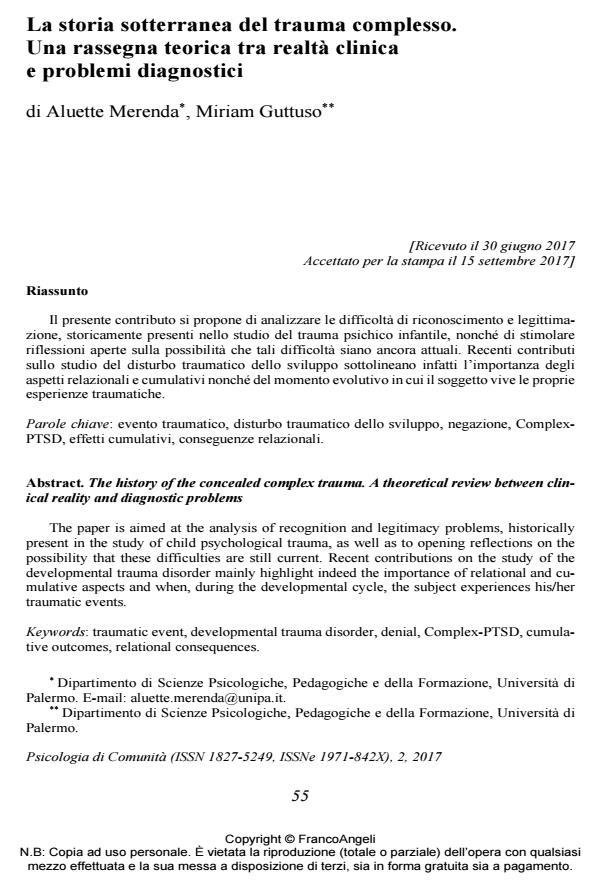The history of the concealed complex trauma. A theoretical review between clinical reality and diagnostic problems
Journal title PSICOLOGIA DI COMUNITA’
Author/s Aluette Merenda, Miriam Guttuso
Publishing Year 2017 Issue 2017/2
Language Italian Pages 8 P. 55-62 File size 132 KB
DOI 10.3280/PSC2017-002006
DOI is like a bar code for intellectual property: to have more infomation
click here
Below, you can see the article first page
If you want to buy this article in PDF format, you can do it, following the instructions to buy download credits

FrancoAngeli is member of Publishers International Linking Association, Inc (PILA), a not-for-profit association which run the CrossRef service enabling links to and from online scholarly content.
The paper is aimed at the analysis of recognition and legitimacy problems, historically present in the study of child psychological trauma, as well as to opening reflections on the possibility that these difficulties are still current. Recent contributions on the study of the developmental trauma disorder mainly highlight indeed the importance of relational and cumulative aspects and when, during the developmental cycle, the subject experiences his/her traumatic events.
Keywords: Traumatic event, developmental trauma disorder, denial, Complex-PTSD, cumu-lative outcomes, relational consequences.
Aluette Merenda, Miriam Guttuso, La storia sotterranea del trauma complesso. Una rassegna teorica tra realtà clinica e problemi diagnostici in "PSICOLOGIA DI COMUNITA’" 2/2017, pp 55-62, DOI: 10.3280/PSC2017-002006